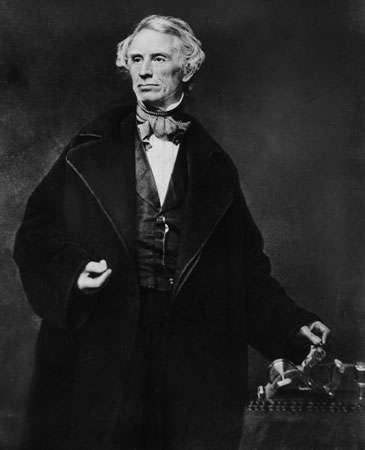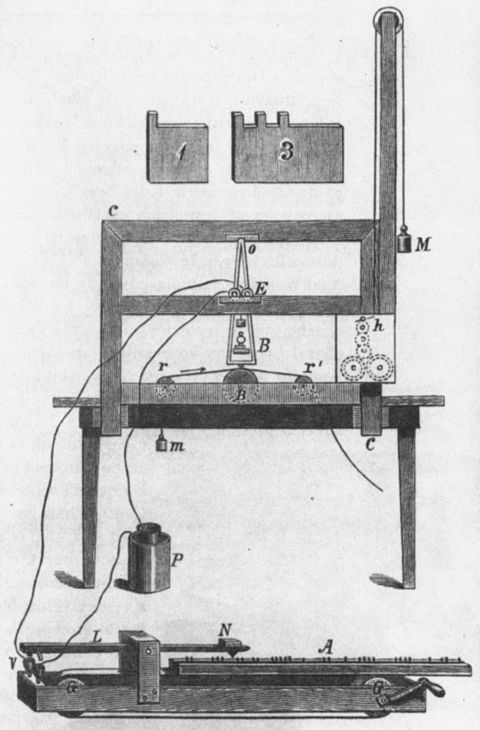Steam and the Speed of Light (1750- 1850)
Summary:
In this week’s class, we learned about the Industrial Revolution, the discovery of Japanese ukiyo-e, and photography. During this time, the Romantic period of art was mainly romantic and nostalgic. In 1789, the French Revolution took place and after years of unrest, Napoleon was crowned France’s emperor in 1804. The Industrial Revolution brought upon many technological advancements. These include the invention of the steam engine by James Watt, which also allowed the production of iron and steel, enabling huge changes in transportation. Factories could also make products in mass quantities, allowing the occurrence of mass consumption.
Many technologies were also created and developed for printing. In 1796, Alois Senefelder invented the lithographic printing, which also led to the invention of chromolithography by Godefroy Engelmann- essentially lithographic printing but with the addition of colour. The cast-iron press was invented in 1800 and was followed by the invention of the steam press in 1814. Both these inventions enabled easier, faster, and cheaper printing.
With the invention of Firmin Didot’s typeface (the 1780s- 90s), the first modern typeface was invented. Many more types were invented in the next years. In 1800, display types (fat faces) were invented by Robert Thorne; Vincent Figgins invented Slab-serif display faces in 1810; William Caslon IV then invented sans serifs in 1816.
Other notable events are the invention of Braille, the invention of photography- the heliogravure, daguerreotype, and calotype/talbotype-, and the discovery of ukiyo-e prints by the Japanese- which impacted Europe artists and society immensely.
This period is an exciting era to learn about. The Didot and Bodoni, the first modern typefaces, were invented during this time and are some of my favourite typefaces. It was fun to see how similar these typefaces still are to today’s version of Didot and Bodoni. I also enjoyed learning about the invention of more decorative typefaces, such as display types and Slab-serifs, as well as the start of sans serifs.
Research:
For this time period, I was assigned to the subject of “science/ tools/ technology” and have decided to research the invention and importance of the telegraph machine.
To start, the telegraph machine is a communications system where information is transmitted over a wire through a series of electrical current pulses, usually in Morse Code.
In 1830, a prototype of the telegraph machine by Joseph Henry was created. However, it was Samuel F.B. Morse who developed and made the telegraph machine work, leading him to first patent it in 1837.

https://cdn.britannica.com/s:700×450/22/18922-004-9BAB509F.jpg
The creation of the telegraph machine resulted from the scientific invention of voltaic cells in 1800 by Alessandro Volta. This made it possible to power electric devices more effectively by using low voltage and high current. Before, devices were powered through friction of static electricity, which had high voltage and low current, making it unsuitable for transmitting information through wires if bad weather or similar situations were to occur.
In 1835, Morse devised a system of dots and dashes to represent letters and numbers. His original transmitter used a device called a portarule, which used a moulded type with built-in dots and dashes. The type would then move through the mechanism in such a way that the dots and dashes would make and break contact between the battery and wire to the receiver. The receiver could then emboss dots and dashes on strips of paper that passed under a stylus. This stylus was controlled by an electromagnet turning on and off by signals from the transmitter.

https://upload.wikimedia.org/wikipedia/commons/thumb/5/5a/Morse_telegraph.jpg/480px-Morse_telegraph.jpg
This system worked but could be improved.
After patenting the machine, Morse partnered with Alfred Vail, a mechanic, who helped improve the mechanical design of all the system’s components. For example, Vail replaced the portarule with a simple make-and-break key, and he refined the use of Morse code in the telegraph so that the shortest code sequences would be assigned to the most frequently used letters.
On May 24, 1844, Samuel Morse sent the first official telegraph message to Alfred Vail: “What hath God wrought?”

http://americanhistory.si.edu/sites/default/files/blog_files/a/6a00e553a80e108834016305707493970d-800wi.jpg
Through these mechanics, the telegraph machine was the principal mean of transmitting long-distance messages for over 100 years. It allowed transmission of information by coded signals over long distances by wire or radio wave and was a vital tool for the transmission of news around the country. It was reliable and regular and with the spread of telegraph systems across the world made by companies such as the Western Union Telegraphy Company, communication became even easier.
_
References:
- Judy’s Lecture Notes
- McGillem, Clare D. “Telegraph.” Encyclopædia Britannica, Encyclopædia Britannica, Inc., 7 Dec. 2016, www.britannica.com/technology/telegraph.
- “What Is Telegraph? – Definition from WhatIs.com.” SearchUnifiedCommunications, searchunifiedcommunications.techtarget.com/definition/telegraph.

